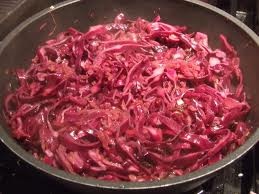If there’s one thing that I love before a big game it’s storing up on fuel. A night-before-a-game meal is a mighty fine thing. My love of far eastern food has been discussed with recipes for Pad Thai and Massaman curry already covered and as a result, when discussing potential takeaways to have on a lazy Saturday night, my mind immediately turned to Thai. It’s the perfect combination of things, there’s spicy and sharp, there’s carbohydrate heavy noodles, nice big pieces of meat and of course coconut milk gives it all that feeling of comfort food.
So we ordered Pad Thai, Kao Soi and a Panang curry but all of this wouldn’t be complete without something crunchy to dip and scoop with. So we ordered a nice big bag of spicy Thai prawn crackers. As we sat preparing to attack the meal, however, we were both left wondering one thing. You see, due to an intolerance, we wanted to know whether prawn crackers contain wheat. Neither of us, we decided, had the slightest idea how they were made.
Due to my love of blogging and my lack of prawn cracker making knowledge, I will defer to another blog Hunger Hunger for Kwan Aunty’s Prawn Crackers:
Ingredients
600g small prawns (flesh only & de-veined)
600g tapioca starch/flour*
1 heaped t salt
1 t white ground pepper
1/2 level t (or reduce slightly) msg
banana leaves to line steamer

Method
1. The prawns needn’t be drained dry. Just wash and put into a machine to mince. Mince the prawns in the machine until fine.
2. Put the prawn mince into your cake mixer, add all the other ingredients and mix using the dough hook for 8 minutes or so. If mixture doesn’t come together, add 1/2 T of water. If too soft, add a little bit more tapioca flour.
3. Taste the raw dough. If it’s bland, add more seasoning. Remember that after frying, the crackers will taste even less salty. Now put the dough on a clean surface and knead with your hands until dough is very smooth (say 10 minutes) and when you press it with your fingers, it feels like pressing your arm (provided your arm isn’t more than 60 years old). Soft yet firm. If dough is hard, wet your hands and knead again. If your dough is too hard/dry, the crackers will have cracks after drying in the sun and they’ll taste very dry after frying.
4. Shape dough into two long rolls, pressing and slapping both ends to compact the rolls so there aren’t any air bubbles. Lay the rolls on the banana leaf (NO need to oil/grease) which is laid over your steamer in which the water should be boiling. If you can’t find banana leaf, just use foil but it won’t give that wonderful aroma as it cooks.
5. Steam at medium high (too high and dough will crack) heat for 1 hour 15 minutes or 1 hour if rolls are thinner.Make sure there is a vent in your steamer lid (a bamboo steamer & lid is best) so that the steam does not rise and fall onto the rolls, making the surface bubbled and wet.
6. When rolls are cool, wrap them in tea towels or foil and leave in fridge to firm up. I leave them overnight. The next morning, take rolls out and leave them out 1/2 hour to come to room temperature. Now we come to the part that’s hardest for me. Using a mandoline slicer (I don’t handle the mandoline well so I take the longer way and slice the rolls with a very sharp knife), cut into thin slices (too thick and they won’t puff so well) and lay them on metal sheets/trays to dry directly in the sun. In our tropical sun, it takes two days of drying before the crackers can be fried.
7. Deep-frying crackers
So there we have a reasonably lengthy and in depth recipe and way of making prawn crackers. I bet they’re delicious but it does seem an awful faff. I must concede that I don’t think that I’ll be making them anytime soon. The important learning here is that they are actually made of tapioca flour and as a result, you can eat them even if you are wheat intolerant – So enjoy!
DC








